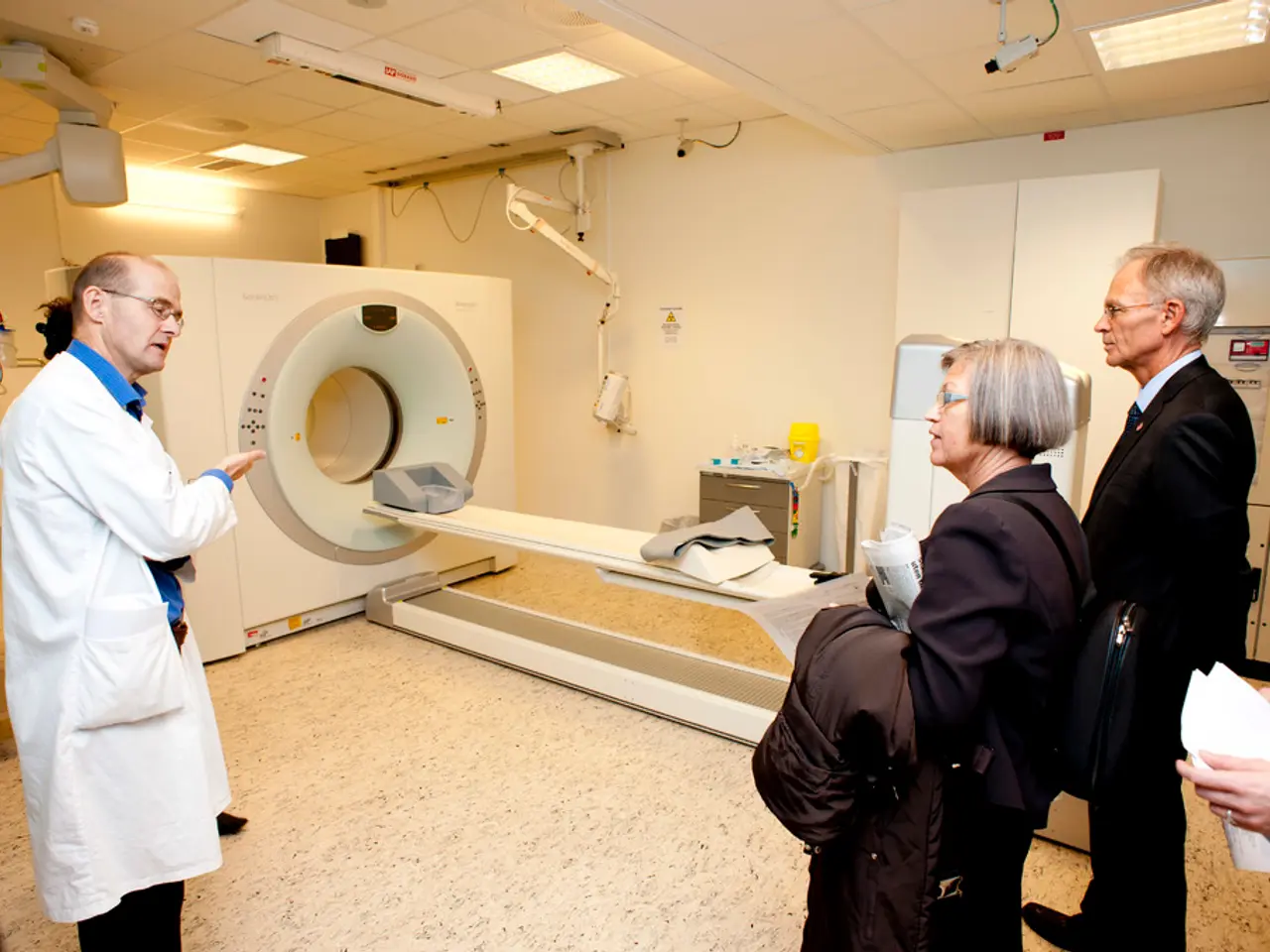Nuclear leftovers may serve as a power source for Europe for extended periods. This company aims to validate this claim.
Thorizon's Molten Salt Reactor Aims to Revolutionise Nuclear Waste Management in Europe
Efforts to find a sustainable solution for nuclear waste disposal are gaining momentum, with Thorizon, a Franco-Dutch startup, leading the charge in Europe. The company, based in the Netherlands, is developing a small modular molten salt reactor (MSR) that aims to reuse nuclear waste for generating new energy.
Thorizon's design uses a system of cartridges filled with molten salt and a mix of spent fuel from traditional reactors and fresh thorium. The company's objective is to deploy this technology, specifically aimed at reusing nuclear waste in Europe, positioning itself among a small but growing group of companies aiming to commercialize advanced MSR tech within this decade or early 2030s.
The reactor, named Thorizon One, is currently undergoing a preliminary joint review process between Dutch and French nuclear regulators for licensing approval. This collaborative regulatory evaluation marks a significant step toward deployment of their molten salt reactor technology.
While detailed timelines for reactor construction or commercial operation have not been publicly disclosed yet, the company is advancing the reactor's development with the goal of leveraging molten salt technology to enable thermal spectrum nuclear waste-burning. Such reactors can reduce the amount of long-lived transuranic elements (like plutonium and americium) in spent nuclear fuel by replacing part of the uranium in that fuel with thorium, thereby lowering nuclear waste storage challenges without the technical complexities of fast reactors.
Industry partners, including Dutch manufacturing giant VDL, are helping prototype core components. Thorizon has raised €42.5mn, including funding from the French government and Dutch bodies, but needs €750mn to begin building its prototype reactor.
Public-private partnerships are crucial for bringing Thorizon's technology to life, according to Lauwers, the CEO of Thorizon. Kiki Lauwers estimates that Europe's stockpiles of nuclear waste could power the entire region for 40 years.
Expanding nuclear power in Europe continues to be a thorny issue, but the tide may be turning due to the twin crises of climate change and energy insecurity. Thorizon aims to create a cleaner, more sustainable source of nuclear energy by blending spent uranium fuel with thorium in a molten salt reactor.
Three pre-feasibility studies are underway for potential launch sites in France, the Netherlands, and Belgium. The Thorizon One reactor, expected to begin construction within five years, is expected to produce 100 megawatts of electricity. The cartridges can be replaced once the radioactive part of the fuel has largely been depleted.
Fast reactors, advanced designs capable of extracting more energy from nuclear fuel and breeding new fuel from waste, were built in the past but phased out due to political and economic reasons. However, Thorizon's MSR technology offers a promising alternative, addressing the concerns around nuclear waste storage and proliferation.
In the past, many fast reactors produced significant quantities of plutonium, the building block of atomic bombs, which was a major concern during the Cold War. Global uranium supplies turned out to be far more abundant than expected, making it cheaper to mine fresh uranium than to invest in recycling infrastructure. Thorizon's design, on the other hand, aims to address these concerns by using thorium, a radioactive metal with untapped potential.
Thorizon's CEO, Kiki Lauwers, states that the cartridge approach isolates extreme conditions inside the reactor, ensuring safety and sustainability. Government backing and venture capital will be essential for Thorizon's success, but the CEO notes that being based in Europe may present funding challenges.
As the world grapples with the challenges of climate change and energy insecurity, Thorizon's MSR technology offers a promising solution for a cleaner, more sustainable future. With the preliminary joint review process underway, Thorizon is one step closer to making this vision a reality.
References: 1. Thorizon 2. Nuclear Energy Insider 3. World Nuclear News 4. Copenhagen Atomics
- Thorizon's objective is to deploy a molten salt reactor technology within this decade or early 2030s, that aims to reuse nuclear waste in Europe, contributing to health-and-wellness by providing a sustainable energy solution.
- Public-private partnerships, including funding from the French government and Dutch bodies, are crucial for bringing Thorizon's technology to life, as they aim to revolutionise nuclear waste management in the industry.
- Thorizon's design, using thorium and a mix of spent fuel from traditional reactors in cartridges, addresses environmental-science concerns around nuclear waste storage and proliferation by reducing the amount of long-lived transuranic elements.
- In the realm of science, Thorizon's innovative approach may lead to a significant reduction in the need for energy, particularly in the field of fitness-and-exercise, as Europe's stockpiles of nuclear waste could potentially power the region for 40 years.
- As Thorizon moves forward with its plan to construct the Thorizon One reactor, expected to produce 100 megawatts of electricity, the future of finance and energy could be heavily influenced by the success of their technology, playing a pivotal role in addressing the challenges of climate-change.




